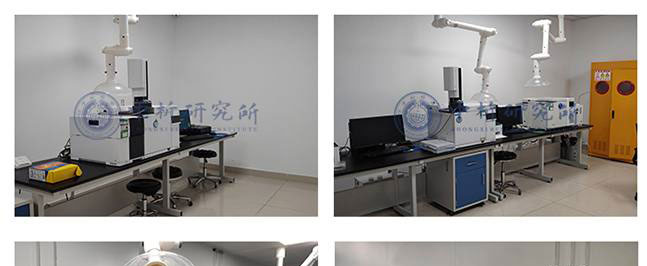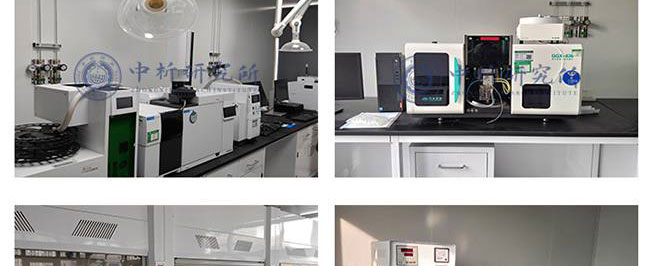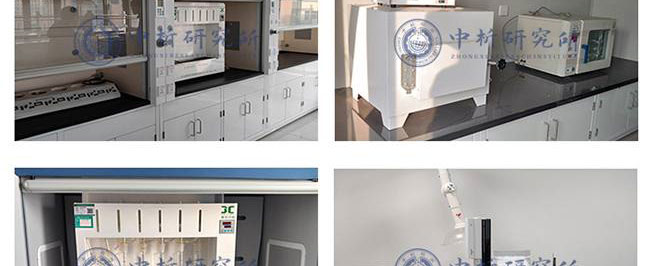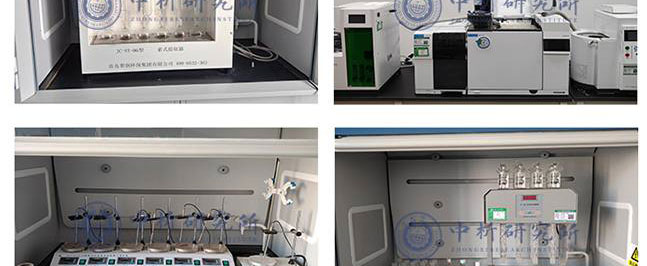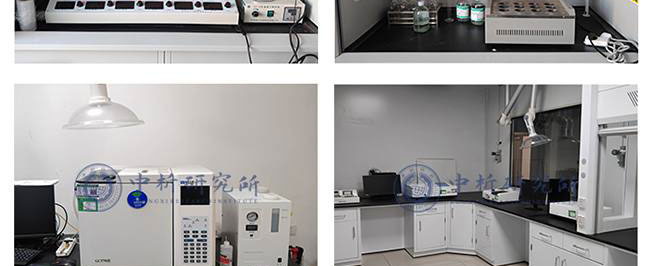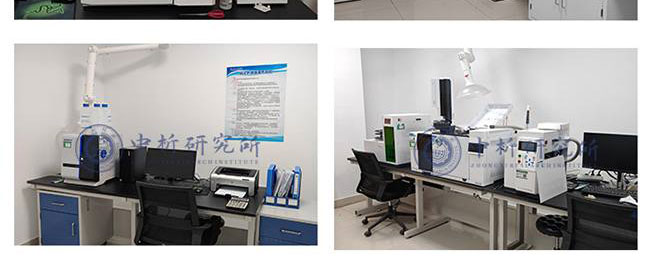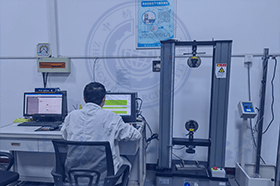国家标准 GB/T 507-1986 绝缘油介电强度测定法
【适用范围】
【中国标准分类】 G40 石油产品
【国际标准分类】 83.060-橡胶
国家标准 GB/T 42125.10-2022 测量、控制和实验室用电气设备的安全要求 第10部分:绝缘电阻测量和介电强度试验设备的特殊要求
【适用范围】除下述内容外,IEC61010-1的第1章均适用。
1.1.1 本文件适用的设备
代替:
用下列内容代替:
本系列安全标准主要预定用作范围内提及的相关产品的产品安全标准,根据IEC指南104和 ISO/IEC指南51中规定的原则,技术委员会在对类似于本文件范围内提及的产品制定相关文件时也应使用本文件。
本文件规定了输出电压交流50V或直流120V以上绝缘电阻测量和介电强度试验用设备的安全要求。
本文件也适用于具有绝缘电阻测量功能或介电强度试验功能的组合测量设备。
1.1. 2不包括在本文件范围内的设备
增加:
增加下列新的列项:
aa) IEC61557-8交流1000V和直流1500V以下低压配电系统电气安全 防护措施的试验、测 量或监控设备 第8部分:IT系统的绝缘监控装置;
bb) IEC61557-9交流1000V和直流1500V以下低压配电系统电气安全 防护措施的试验、测量或监控设备 第9部分:IT系统中的绝缘故障定位设备。
【中国标准分类】 E38 电工仪器仪表
【国际标准分类】 75.080-石油产品综合
行业标准 DL/T 846.7-2016 高电压测试设备通用技术条件第7部分:绝缘油介电强度测试仪
【适用范围】本部分规定了绝缘油介电强度测试仪的技术要求、试验方法、检验规则、铭牌、包装、运输和储存等要求。
本部分适用于绝缘油介电强度测试仪的生产、检验、使用及维修。
【中国标准分类】 F24 电力
【国际标准分类】 29.240.99-其他有关输电网和配电网的设备
行业标准 DL/T 846.7-2004 高电压测试设备通用技术条件 第7部分:绝缘油介电强度测试仪
【适用范围】DL/T 846的本部分规定了绝缘油介电强度测试仪的产品分类、技术要求、试验方法、检验规则、包装、运输、储存等。 本部分适用于绝缘油介电强度测试仪。盖测试仪主要用于电力、石油、化工等部门进行绝缘油的介电强度测试。
【中国标准分类】 F24 电力
【国际标准分类】 27.100-电站综合
行业标准 JJF (机械) 1062-2021 石油蜡和石油脂介电强度测定法
【适用范围】本标准规定了石油蜡和石油脂常态下介电强度的测定方法。rn本标准适用于能够制备平整光滑蜡片的石油蜡或石油蜡熔合物,以及石油脂介电强度的测定。rn
【中国标准分类】 K10 石油产品
【国际标准分类】 29.035-绝缘材料
国际标准 IEC 60243-1-1998 绝缘材料的介电强度试验方法.第1部分:在市电频率下的试验
【适用范围】This part of IEC 60243 gives methods of test for the determination of the short-time electric strength of solid insulating materials at power frequencies
that is
those between 48 Hz and 62 Hz. It does not consider the testing of liquids and gases
although these are specified and used as impregnants or surrounding media for the solid insulating materials being tested.nNOTE - Methods for the determination of breakdown voltages along the surfaces of solid insulating materials are included.
【中国标准分类】 K15 电工材料和通用零件
【国际标准分类】 29.035-绝缘材料
国际标准 IEC 60243-2-2013 固体绝缘材料的介电强度--测试方法--第2部分:直流试验的补充技术要求
【适用范围】This part of IEC 60243 gives requirements additional to those in IEC 60243-1 for thendetermination of the electric strength of solid insulating materials under direct voltage stress.
【中国标准分类】 K15 基础科学
【国际标准分类】 29.035.01-绝缘材料综合
国外标准 ASTM D2477-2007 商业电源频率下绝缘气体介电击穿电压和介电强度的试验方法
【适用范围】
The dielectric breakdown voltage and dielectric strength of an insulating gas in a uniform field depends primarily on the molecular structure of the gas. As different gases are mixed either by plan or by contamination
any change in dielectric breakdown voltage and dielectric strength will depend on both the nature and proportion of the individual gases. This test method uses plane and spherical electrodes which provide a nearly uniform field (see Appendix) in the area of electrical discharge. It is suitable for determining the dielectric breakdown voltage and dielectric strength of different gases and mixtures thereof for research and application evaluations and also as a field test. A more complete discussion of the significance of the dielectric strength test is given in the Appendix.
1.1 This test method covers the determination of the dielectric breakdown voltage and dielectric strength of insulating gases used in transformers
circuit breakers
cables
and similar apparatus as an insulating medium. The test method is applicable only to gases with boiling points below room temperature at atmospheric pressure.
1.2 This standard may involve hazardous materials
operations
and equipment. This standard does not purport to address all of the safety concerns
if any
associated with its use. It is the responsibility of the user of this standard to establish appropriate safety and health practices and determine the applicability of regulatory limitations prior to use.
1.3 Mercury has been designated by EPA and many state agencies as a hazardous material that can cause central nervous system
kidney and liver damage. Mercury
or its vapor
may be hazardous to health and corrosive to materials. Caution should be taken when handling mercury and mercury containing products. See the applicable product Material Safety Data Sheet (MSDS) for details and EPA''s website 8212; http://www.epa.gov/mercury/faq.htm for additional information. Users should be aware that selling mercury and/or mercury containing products into your state may be prohibited by state law.
【中国标准分类】 K15 电工材料和通用零件
【国际标准分类】 29.035.01-绝缘材料综合
国外标准 ASTM D3426-1997(2012) 商业电源频率下绝缘气体介电击穿电压和介电强度的试验方法
【适用范围】1.1 This test method covers the determination of the dielectric breakdown voltage and dielectric strength of insulating gases used in transformers
circuit breakers
cables
and similar apparatus as an insulating medium. The test method is applicable only to gases with boiling points below room temperature at atmospheric pressure. 1.2 This standard does not purport to address all of the safety concerns
if any
associated with its use. It is the responsibility of the user of this standard to establish appropriate safety and health practices and determine the applicability of regulatory limitations prior to use. 1.3 Mercury has been designated by EPA and many state agencies as a hazardous material that can cause central nervous system
kidney and liver damage. Mercury
or its vapor
may be hazardous to health and corrosive to materials. Caution should be taken when handling mercury and mercury containing products. See the applicable product Material Safety Data Sheet (MSDS) for details and EPA's website http://www.epa.gov/mercury/faq.htm for additional information. Users should be aware that selling mercury and/or mercury containing products into your state may be prohibited by state law.
【中国标准分类】 K15 电工材料和通用零件
【国际标准分类】 29.040.20-绝缘气体
国外标准 ASTM D3426-1997(2004) 用脉冲波法测定固体电绝缘材料的介电击穿电压及介电强度的试验方法
【适用范围】
Insulating materials used in high-voltage equipment may be subjected to transient voltage stresses
resulting from such causes as nearby lightning strokes. This is particularly true of apparatus such as transformers and switchgear used in electrical-power transmission and distribution systems. The ability of insulating materials to withstand these transient voltages is important in establishing the reliability of apparatus insulated with these materials.
Transient voltages caused by lightning may be of either positive or negative polarity. In a symmetrical field between identical electrodes
the polarity has no effect on the breakdown strength. However
with dissimilar electrodes there may be a pronounced polarity effect. It is common practice when using dissimilar electrodes
to make negative that electrode at which the higher gradient will appear. When asymmetrical electrodes are used for testing materials with which the tester has no previous experience or knowledge
it is recommended that he make comparative tests with positive polarity and negative polarity applied to the higher gradient
or smaller electrode
to determine which polarity produces the lower breakdown voltage.
The standard wave shape is a 1.2 by 50-x03BC;s wave
reaching peak voltage in approximately 1.2 x03BC;s and decaying to 50 % of peak voltage in approximately 50 x03BC;s after the beginning of the wave. This wave is intended to simulate a lightning stroke that may strike a system without causing failure on the system.
For most materials
the impulse dielectric strength will be higher than either its power frequency alternating voltage or its direct voltage dielectric strengths. Because of the short time involved
dielectric heating and other thermal effects are largely eliminated during impulse testing. Thus
the impulse test gives values closer to the intrinsic breakdown strength than do longer time tests. From comparisons of the impulse dielectric strength with the values obtained from longer time tests
inferences may be drawn as to the modes of failures under the various tests for a given material. Appendix X1 of Test Method D 149 should be referred to for further information on this subject.
1.1 This test method covers the determination of dielectric strength of solid electrical insulating materials under simulated-lightning impulse conditions.
1.2 Procedures are given for tests using standard 1.2 by 50 s full-wave impulses.
1.3 This test method is intended for use in determining the impulse dielectric strength of insulating materials
either using simple electrodes or functional models. It is not intended for use in impulse testing of apparatus.
1.4 This test method is similar to IEC Publication 243-3. All procedures in this test method are included in IEC 243-3. Differences between this test method and IEC 243-3 are largely editorial.
1.5 This standard does not purport to address all of the safety concerns
if any
associated with its use. It is the responsibility of the user of this standard to establish appropriate safety and health practices and determine the applicability of regulatory limitations prior to use. Specific precaution statements are given in Section 9.
【中国标准分类】 K15 电工材料和通用零件
【国际标准分类】 29.035.01-绝缘材料综合
国外标准 BS 2918-2-1994 航空航天系列.断路器.试验方法.介电强度
【适用范围】
【中国标准分类】 V40 航空器及其附件
【国际标准分类】 49.060-航空航天用电气设备与系统
国外标准 BS EN 50289-1-3-2001(R2006) 通信电缆.试验方法规范.电气试验方法.介电强度
【适用范围】Details the test methods to verify the dielectric strength of the insulation of the finished cables used in analogue and digital communication systems. To be read in conjunction with BS EN 50289-1-1:2001
【中国标准分类】 K13 电工材料和通用零件
【国际标准分类】 33.120.10-同轴电缆、波导
国外标准 BS EN 60243-1-2013 固体绝缘材料介电强度试验方法.电源频率下的试验
【适用范围】This part of IEC 60243 gives methods of test for the determination of the short-time electric strength of solid insulating materials at power frequencies
that is
those between 48 Hz and 62 Hz. It does not consider the testing of liquids and gases
although these are specified and used as impregnants or surrounding media for the solid insulating materials being tested.nNOTE - Methods for the determination of breakdown voltages along the surfaces of solid insulating materials are included.
【中国标准分类】 K15 电工材料和通用零件
【国际标准分类】 29.035.01-绝缘材料综合
国外标准 BS EN 60243-2-2001 固体绝缘材料介电强度试验方法.直流电压测试补充要求
【适用范围】To be read in conjunction with BS EN 60243-1:1998
【中国标准分类】 K15 电工材料和通用零件
【国际标准分类】 29.035.01-绝缘材料综合
国外标准 BS EN 60243-3-2002 固体绝缘材料介电强度试验方法.1.2/50s冲击试验补充要求
【适用范围】This part of IEC 60243 gives requirements additional to those in IEC 60243-1 for the determination of the electric strength of solid insulating materials under 1
2/50 μs impulse voltage stress.
【中国标准分类】 K15 电工材料和通用零件
【国际标准分类】 29.035.01-绝缘材料综合
国外标准 BS EN 60243-3-1994 固体绝缘材料介电强度的试验方法.脉冲电压试验的附加要求
【适用范围】
【中国标准分类】 K15 电工材料和通用零件
【国际标准分类】 29.035.01-绝缘材料综合
国外标准 DIN VDE 0472-509-1986 航空和航天 断路器 试验方法 第301部分:介电强度
【适用范围】This standard specifies a method of verifying the dielectric strength of circuit breakers. It shall be used together with DIN EN 3841-100.
【中国标准分类】 V40 航空器及其附件
【国际标准分类】 49.060-航空航天用电气设备与系统
国外标准 DIN EN 50289-1-3-2002 通信电缆.试验方法规范.第1-3部分:电气试验方法.介电强度
【适用范围】The document details the test methods to verify the dielectric strenght of the insulation of the finished cables used in analogue and digital communication systems.
【中国标准分类】 K13 电工材料和通用零件
【国际标准分类】 33.120.20-导线和对称电缆
国外标准 ANSI/ASTM D149a-1997 固体电绝缘材料在工业电源频率下的介电击穿电压和介电强度的试验方法
【适用范围】This test method covers procedures for the determination of dielectric strength of solid insulating materials at commercial power frequencies
under specified conditions.<(hoch)
> Unless otherwise specified
the tests shall be made at 60 Hz. However
this test method may be used at any frequency from 25 to 800 Hz. At frequencies above 800 Hz
dielectric heating may be a problem. This test method is intended to be used in conjunction with any ASTM standard or other document that refers to this test method. References to this document should specify the particular options to be used (see ). It may be used at various temperatures
and in any suitable gaseous or liquid surrounding medium. This test method is not intended for measuring the dielectric strength of materials that are fluid under the conditions of test. This test method is not intended for use in determining intrinsic dielectric strength
direct-voltage dielectric strength
or thermal failure under electrical stress (see Test Method D 3151). This test method is most commonly used to determine the dielectric breakdown voltage through the thickness of a test specimen (puncture). It may also be used to determine dielectric breakdown voltage along the interface between a solid specimen and a gaseous or liquid surrounding medium (flashover). With the addition of instructions modifying Section
this test method may be used for proof testing. This test method is similar to IEC Publication 243-1. All procedures in this method are included in IEC 243-1. Differences between this method and IEC 243-1 are largely editorial. This standard does not purport to address all of the safety concerns
if any
associated with its use. It is the responsibility of the user of this standard to establish appropriate safety and health practices and determine the applicability of regulatory limitations prior to use. Specific hazard statements are given in Section . Also see .
【中国标准分类】 K15 电工材料和通用零件
【国际标准分类】 29.035.01-绝缘材料综合
国外标准 ANSI/ASTM D149-1995 固体电绝缘材料在工业用电频率下的介电击穿电压和介电强度的试验方法(10.01)
【适用范围】This test method covers procedures for the determination of dielectric strength of solid insulating materials at commercial power frequencies
under specified conditions.<(hoch)
> Unless otherwise specified
the tests shall be made at 60 Hz. However
this test method may be used at any frequency from 25 to 800 Hz. At frequencies above 800 Hz
dielectric heating may be a problem. This test method is intended to be used in conjunction with any ASTM standard or other document that refers to this test method. References to this document should specify the particular options to be used (see ).It may be used at various temperatures
and in any suitable gaseous or liquid surrounding medium. This test method is not intended for measuring the dielectric strength of materials that are fluid under the conditions of test. This test method is not intended for use in determining intrinsic dielectric strength
direct-voltage dielectric strength
or thermal failure under electrical stress (see Test Method D 3151).This test method is most commonly used to determine the dielectric breakdown voltage through the thickness of a test specimen (puncture). It may also be used to determine dielectric breakdown voltage along the interface between a solid specimen and a gaseous or liquid surrounding medium (flashover). With the addition of instructions modifying Section
this test method may be used for proof testing. This test method is similar to IEC Publication 243-1. All procedures in this method are included in IEC 243-1. Differences between this method and IEC 243-1 are largely editorial. This standard does not purport to address all of the safety concerns
if any
associated with its use. It is the responsibility of the user of this standard to establish appropriate safety and health practices and determine the applicability of regulatory limitations prior to use. Specific hazard statements are given in Section . Also see .
【中国标准分类】 K15 电工材料和通用零件
【国际标准分类】 29.035.01-绝缘材料综合
国外标准 ANSI/ASTM D3426-1995 用冲击波测定电气固体绝缘材料的电介质击穿电压和介电强度的试验方法(10.02)
【适用范围】This test method covers the determination of dielectric strength of solid electrical insulating materials under simulated-lightning impulse conditions. Procedures are given for tests using standard 1.2 by 50 s full-wave impulses. This test method is intended for use in determining the impulse dielectric strength of insulating materials
either using simple electrodes or functional models. It is not intended for use in impulse testing of apparatus. This test method is similar to IEC Publication 243-3. All procedures in this test method are included in IEC 243-3. Differences between this test method and IEC 243-3 are largely editorial. This standard does not purport to address all of the safety concerns
if any
associated with its use. It is the responsibility of the user of this standard to establish appropriate safety and health practices and determine the applicability of regulatory limitations prior to use. Specific precaution statements are given in Section 9.
【中国标准分类】 K15 电工材料和通用零件
【国际标准分类】 29.035.01-绝缘材料综合
国外标准 ANSI/ASTM D3755-1997 直流电压应力下电气绝缘材料的介电击穿电压和介电强度的试验方法
【适用范围】This test method covers the determination of dielectric breakdown voltage and dielectric strength of solid electrical insulating materials under direct-voltage stress. Since some materials require special treatment
reference should also be made to ASTM specifications or to the test method directly applicable to the material to be tested. See Test Method D 149 for the determination of dielectric strength of electrical insulating materials at commercial power frequencies. This test method is similar to IEC Publication 243-2. All procedures in this test method are included in IEC 243-2. Differences between this test method and IEC 243-2 are largely editorial. This standard does not purport to address all of the safety concerns
if any
associated with its use. It is the responsibility of the user of this standard to establish appropriate safety and health practices and determine the applicability of regulatory limitations prior to use. Specific precaution statements are given in Section 7.
【中国标准分类】 K15 电工材料和通用零件
【国际标准分类】 29.035.01-绝缘材料综合
国家标准 GB/T 3333-1999 电缆纸工频击穿电压试验方法
【适用范围】 本标准规定了电缆纸介电强度--工频击穿电压测定方法。 本标准适用于测试未浸渍电力电缆或与之类似的纤维绝缘纸工频电压下的击穿强度。
【中国标准分类】 U60 造纸
【国际标准分类】 47.020.70-导航和控制设备
国家标准 GB/T 15579.10-2020 弧焊设备 第10部分:电磁兼容性(EMC)要求
【适用范围】GB/T15579的本部分规定了:
a)射频发射的标准和试验方法;
b)谐波电流发射、电压波动和闪烁的标准和试验方法;
c)抗扰度要求和试验方法,包括连续骚扰、瞬态骚扰、传导骚扰、辐射骚扰和静电放电。
本部分适用于弧焊及类似工艺的设备,包括电源及辅助设备,如送丝装置、冷却系统、引弧和稳弧装置等。
注1:类似工艺是指如等离子切割,电弧螺柱焊等。
注2:本部分不涉及弧焊设备的基本安全要求,如防电击、非常规运行、绝缘配合和相关的介电强度试验。
按照本部分进行型式试验并符合要求的弧焊设备,适用于所有应用场所。
【中国标准分类】 J64 通用加工工艺
【国际标准分类】 25.160.30-焊接设备
国家标准 GB/T 15579.10-2008 弧焊设备 第10部分:电磁兼容性(EMC)要求
【适用范围】本部分规定了:rna)射频发射的标准和试验方法;rnb)谐波电流发射、电压波动和闪烁的标准和试验方法;rnc)抗扰度要求和试验方法,包括连续骚扰、瞬态骚扰、传导骚扰、辐射骚扰和静电放电。rn本部分适用于弧焊及类似工艺的设备,包括电源及辅助设备,如送丝装置、冷却系统、引弧和稳弧装置等。rn注1:类似工艺是指如等离子切割,电弧螺柱焊等工艺。rn注2:本部分不涉及弧焊设备的基本安全要求,如防电击、非常规运行、绝缘配合和相关的介电强度试验。rn本部分适用于所有场合的弧焊设备。
【中国标准分类】 J64 通用加工工艺
【国际标准分类】 25.160.30-焊接设备
国家标准 GB/T 18211-2017 微电机安全通用要求
【适用范围】本标准规定了微电机的安全要求,包括标志、泄漏电流、绝缘介电强度、绝缘电阻、电气间隙和爬电距离、结构、机械强度、保护接地、防护、防锈、湿热、耐热变形性、阻燃性、非正常工作、电磁兼容性及检验规则。
本标准适用于GB/T7345所规定的控制电机及其他用途的微电机(以下简称电机)。
【中国标准分类】 K24 旋转电机
【国际标准分类】 29.160.30-电动机
行业标准 JB/T 9439-1999 载体击穿电压测定方法
【适用范围】本标准适用于静电复印干式双组份显影剂载体(以下简称载体)的击穿电压和介电强度的测定。
【中国标准分类】 Э29 电影、照相、缩微、复印设备
【国际标准分类】 31.100-电子管
4、双方将就检测项目进行详细沟通,并签署保密协议,以保证客户信息的保密性。在此基础上,我们将进行测试试验.














